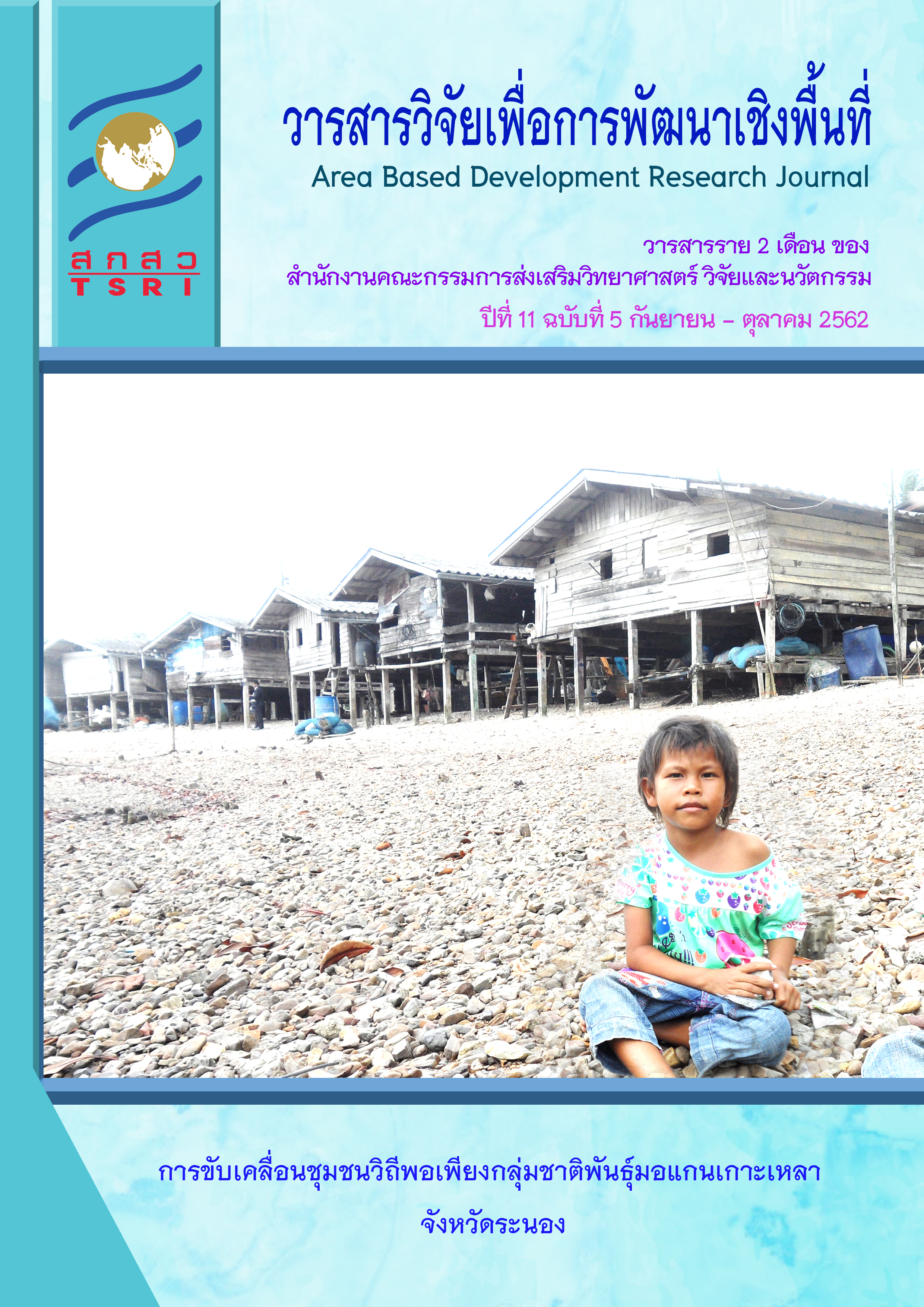Promotion and Development of Pitak Island Tourism Community to Trading Villages
Main Article Content
Abstract
This research aims at constructing a business model to be used as community’s business capacity development guidelines. The model will help promote and develop the local business capacity as well as enhance community enterprises’ product distribution channels. The development process is based on participatory action research design. The community is involved in the planning, public relations, marketing and media design. Data are collected through surveys, action meetings, SWOT analysis and content analysis. The results are processed through descriptive data analysis. According to the findings, the tourism community in Pitak Island has the strengths in unique natural resources, local fishing and local-wisdom seafood processing. Pitak Island tourism community has prepared a business model by setting sales targets, planning production and distribution as well as managing current capital for financial liquidity. Pitak Island tourism community’s distribution channels include homestay storefronts, product exhibitions and village product distribution centers with an addition of online sales and distribution in restaurants and hotels. The community survey has revealed the locals’ interest and readiness for proceeding into a commercial village. They are keen on ways to promote and develop value-added local products and services, which include designing and preparing packages, using vacuum-sealed packages and price tagging equipment. Also, they see the needs to promote and develop local tourism. Recommendations are given for solving the community’s weaknesses include appropriate sanitary waste collection or disposal systems, and online marketing implementation. Parking facilities, lodgings and restrooms should be managed in consistent with supporting capacity while marketing education and training be provided for the community.
Article Details
References
ธเนศ รอดประดิษฐ์ และ เด่นชาติ ประทุมเพ็ชร์. (2551). การศึกษาความเป็นไปได้ในการทำธุรกิจสื่อป้ายโฆษณาดิจิตอลภายในศูนย์การค้า โดยเทคโนโลยีการกระจายข้อมูลผ่านระบบเครือข่ายคอมพิวเตอร์ : กรณีศึกษาศูนย์การค้าสยามสแควร์. (รายงานวิจัยฉบับสมบูรณ์). กรุงเทพฯ: วิทยาลัยนวัตกรรม, มหาวิทยาลัยธรรมศาสตร์
นรา พงษ์พานิช อำนาจ รักษาพล เบญจมาศ ณ ทองแก้ว ภัทร์ธนกัลย์ เตี่ยไพบูลย์ อำพล ธานีครุฑ วิจิตร พันธุ์พืช อรอนงค์ เย็นบางสะพาน พรศรี รัตนราช และสถาพร หิ้นเตี้ยน. (2560). การจัดทำผังชุมชนเพื่อการพัฒนาการท่องเที่ยวอย่างยั่งยืนของชุมชนเกาะพิทักษ์ จังหวัดชุมพร (รายงานวิจัยฉบับสมบูรณ์). กรุงเทพฯ: สำนักงานกองทุนสนับสนุนการวิจัย (สกว.).
เบญจมาศ ณ ทองแก้ว. (2557). ขีดความสามารถในการรองรับ (Carrying Capacity) การท่องเที่ยวโดยชุมชนของเกาะพิทักษ์ จังหวัดชุมพร ระยะที่ 2. วารสารวิจัยเพื่อการพัฒนาเชิงพื้นที่, 6(4), 79-93.
ศรีสุดา อัฏฏะวัชระ ชนิสรา แก้วสวรรค์ บรรพต วิรุณราช . (2561). ปัจจัยแห่งความสำเร็จที่มีต่อโครงการทำมาค้าขายของโรงเรียนประชารัฐภาคตะวันออก. วารสารวิทยาลัยพาณิชยศาสตร์บูรพาปริทัศน์, 13(1), 135-156.
สำนักงานคณะกรรมการพัฒนาการเศรษฐกิจและสังคมแห่งชาติ. (2562). แผนพัฒนาแผนพัฒนาเศรษฐกิจและสังคมแห่งชาติ ฉบับที่ 12. สำนักคณะกรรมการพัฒนาเศรษฐกิจและสังคมแห่งชาติ. กรุงเทพฯ: สำนักงานคณะกรรมการพัฒนาการเศรษฐกิจและสังคมแห่งชาติ สำนักนายกรัฐมนตรี.
อำนาจ รักษาพล เบญจมาศ ณ ทองแก้ว จุฑามาส เพ็งโคนา ชลดรงค์ ทองสง และ บุญศิลป์ จิตตะประพันธ์. (2560). การพัฒนากลยุทธ์ทางการตลาด ระบบโครงข่ายการท่องเที่ยวโดยชุมชน จังหวัดชุมพร. วารสารวิจัยเพื่อการพัฒนาเชิงพื้นที่, 9(1), 23-37.
Osterwalder, A., and Pigneur, Y. (2005). Clarifying Business Models: Originals, present, and Future of the Concept. Communications of the Association for Information Systems, 16, 1-25.
